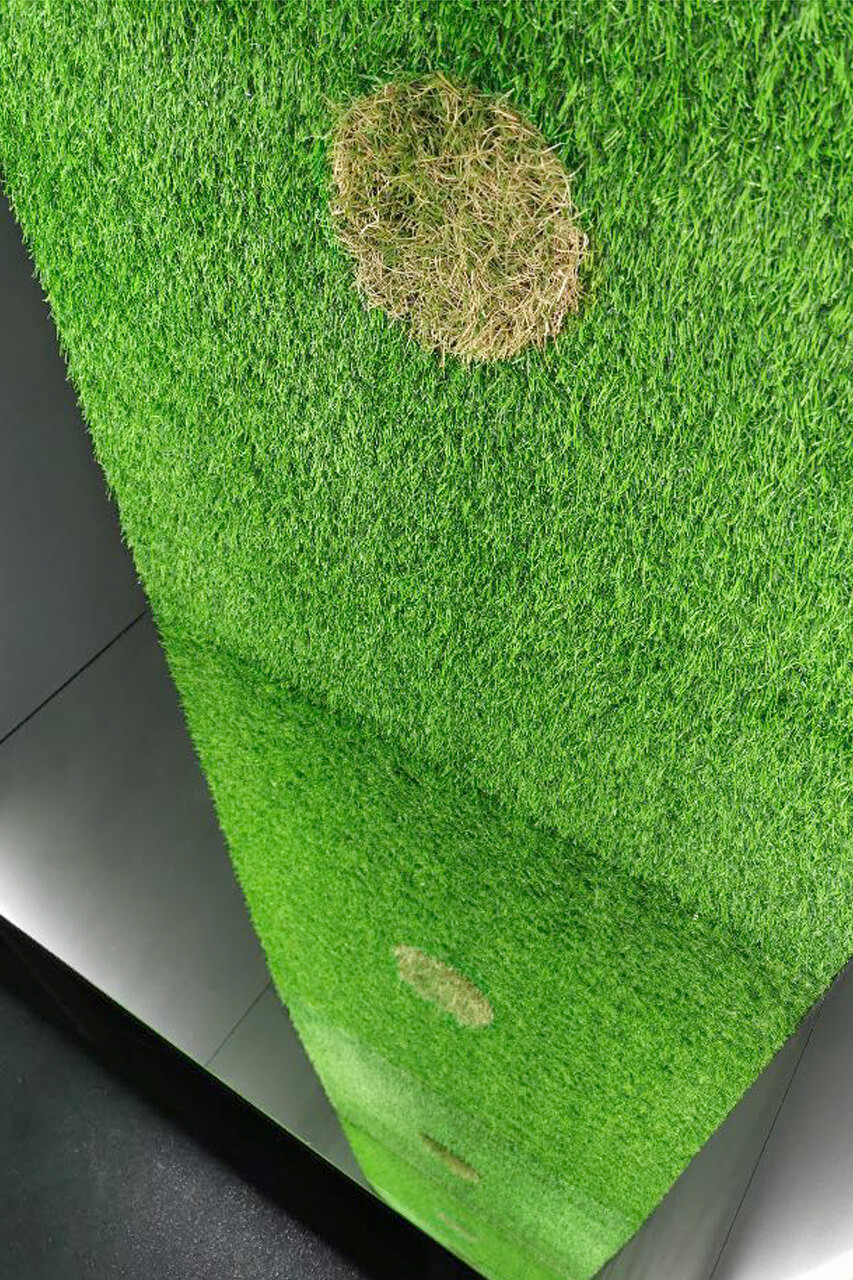
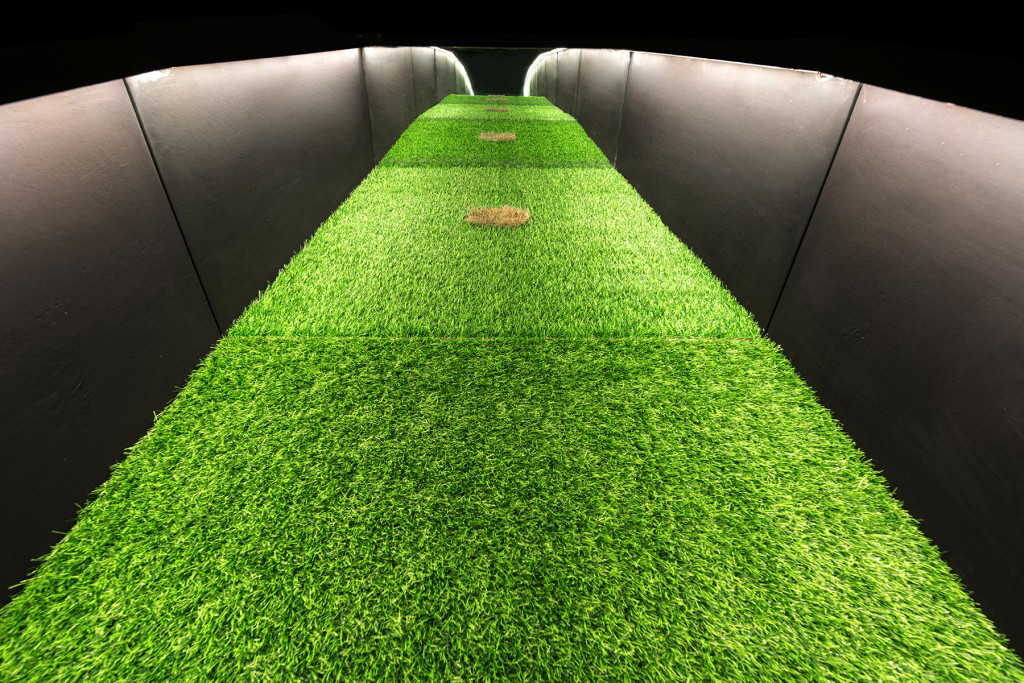
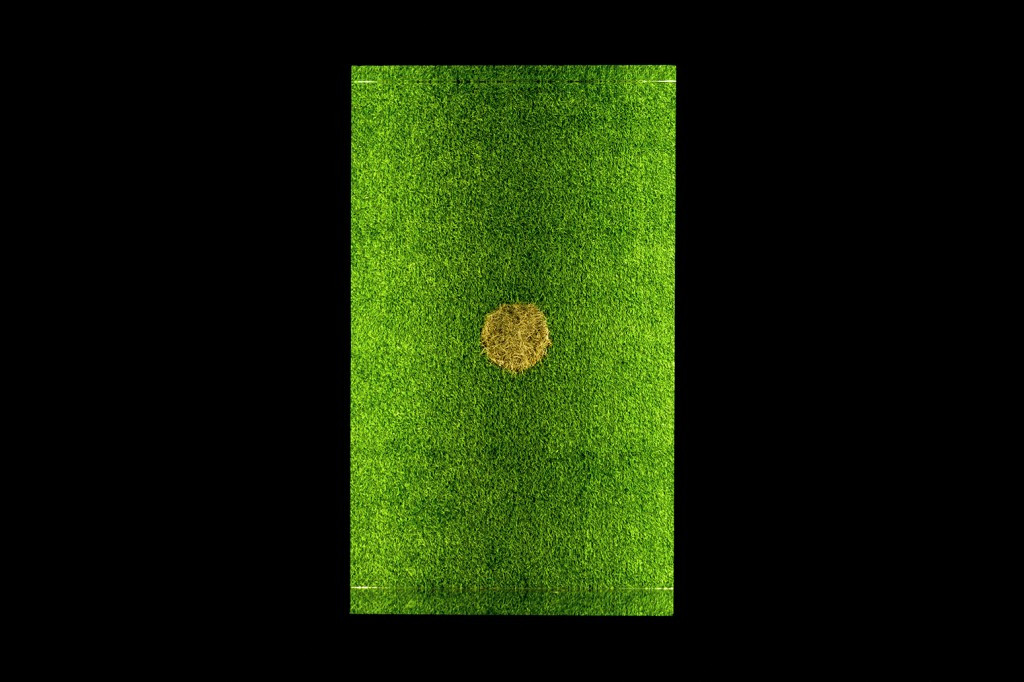
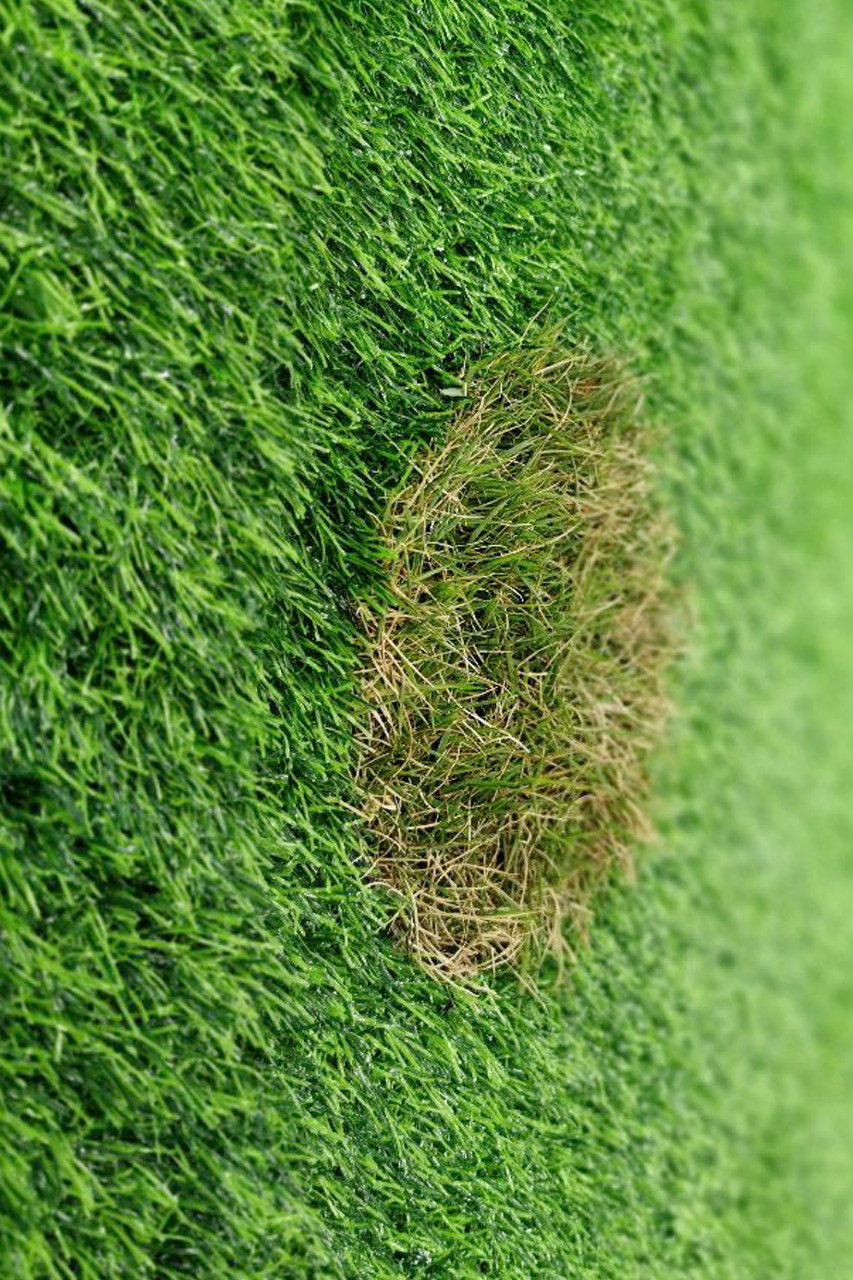
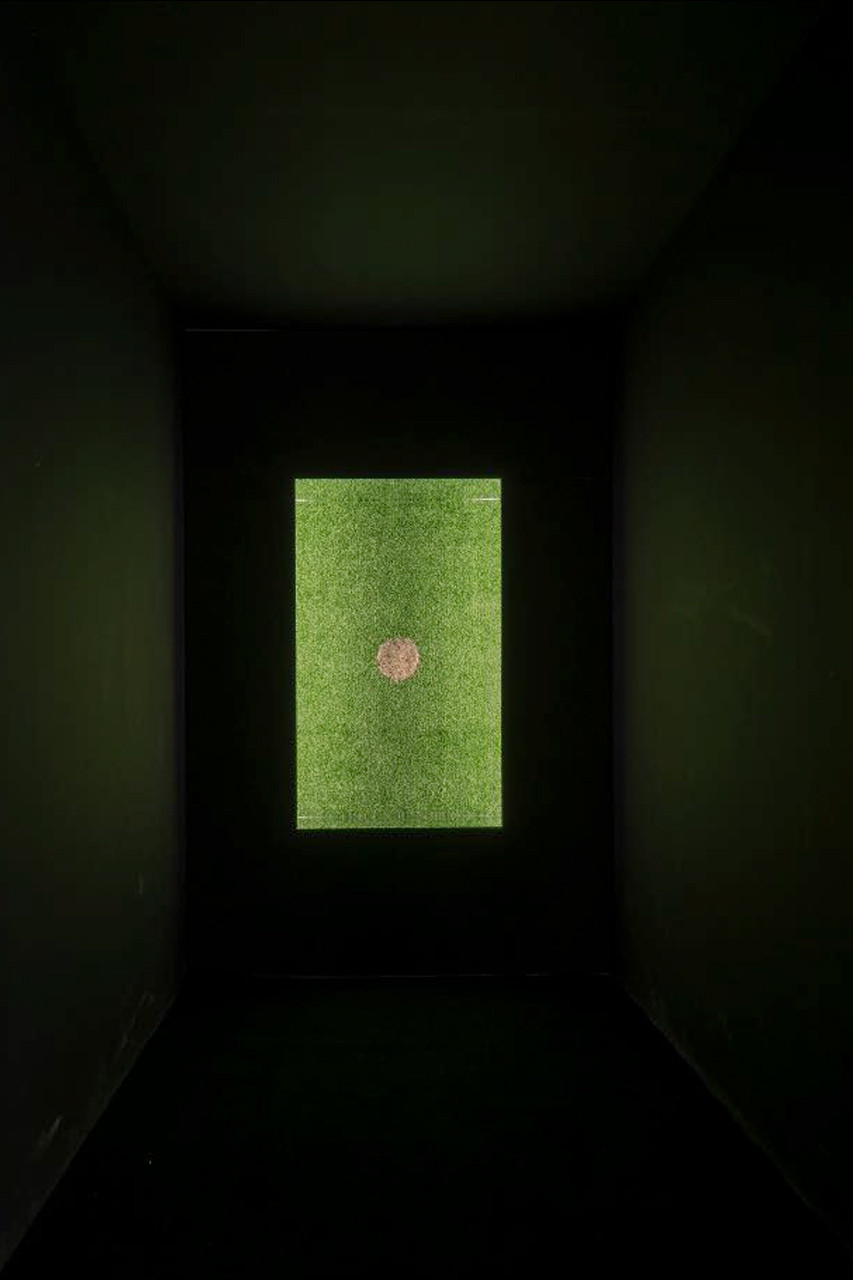
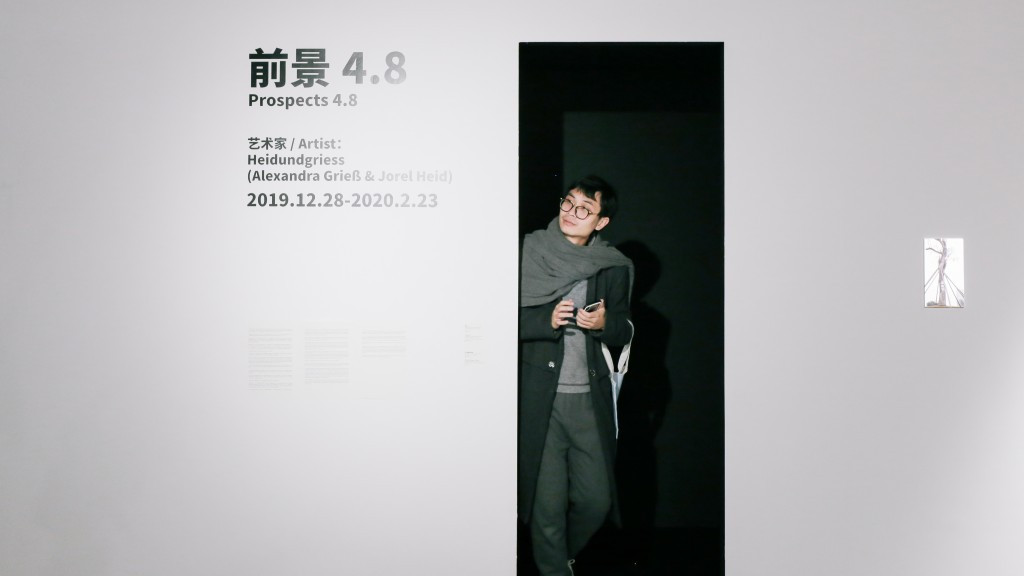
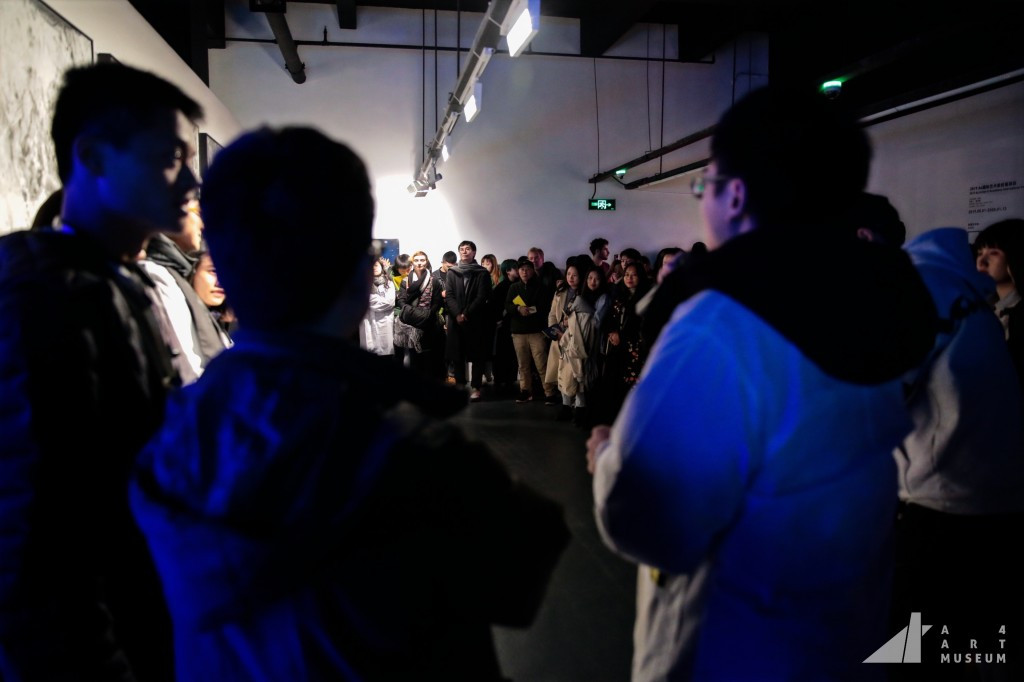


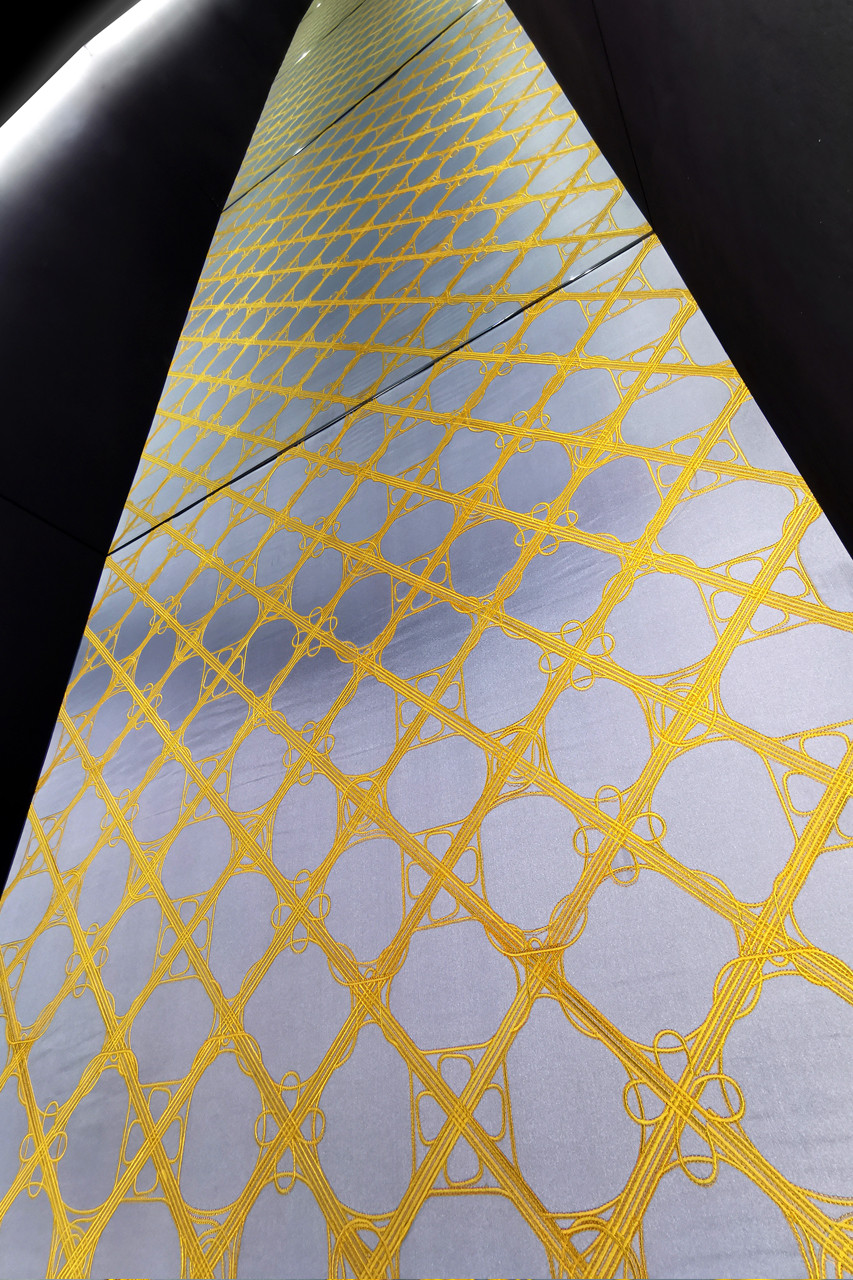
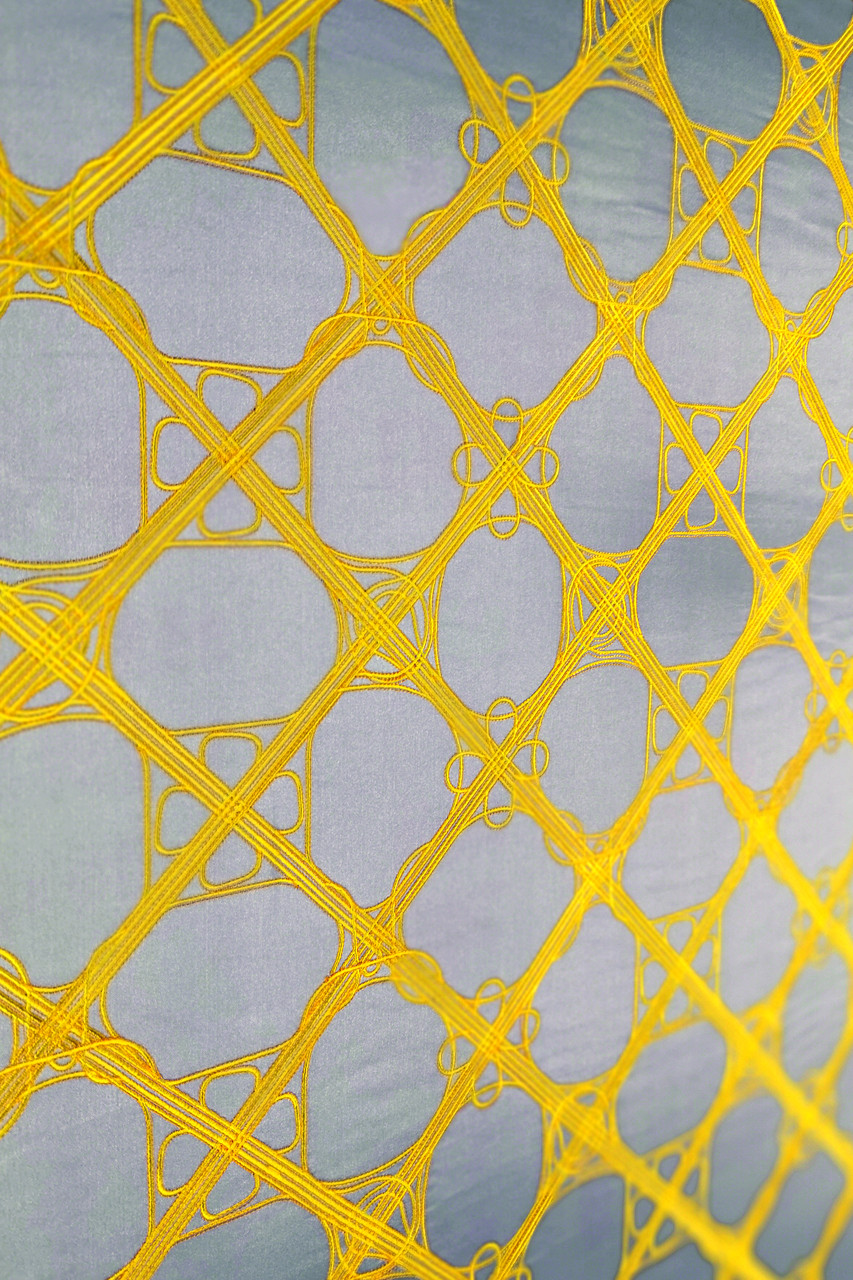

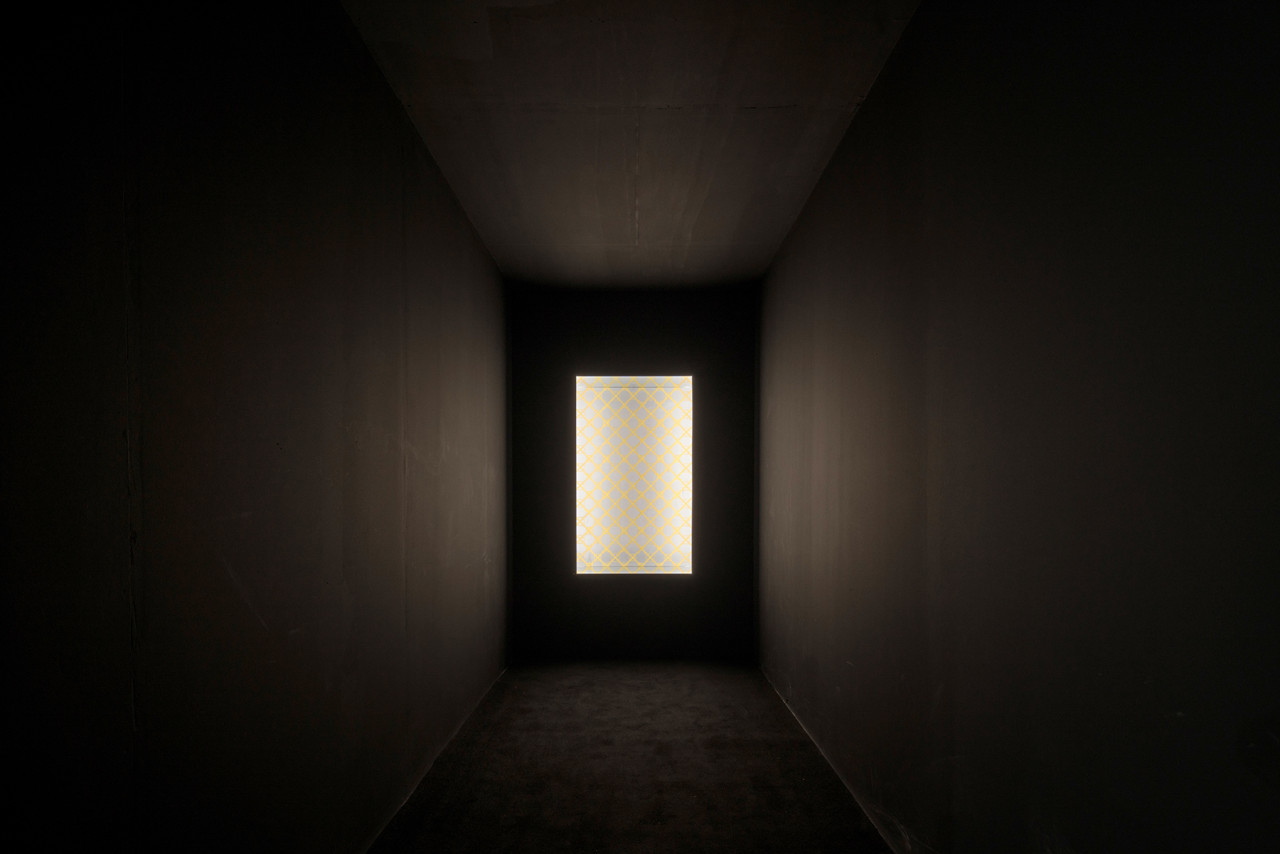
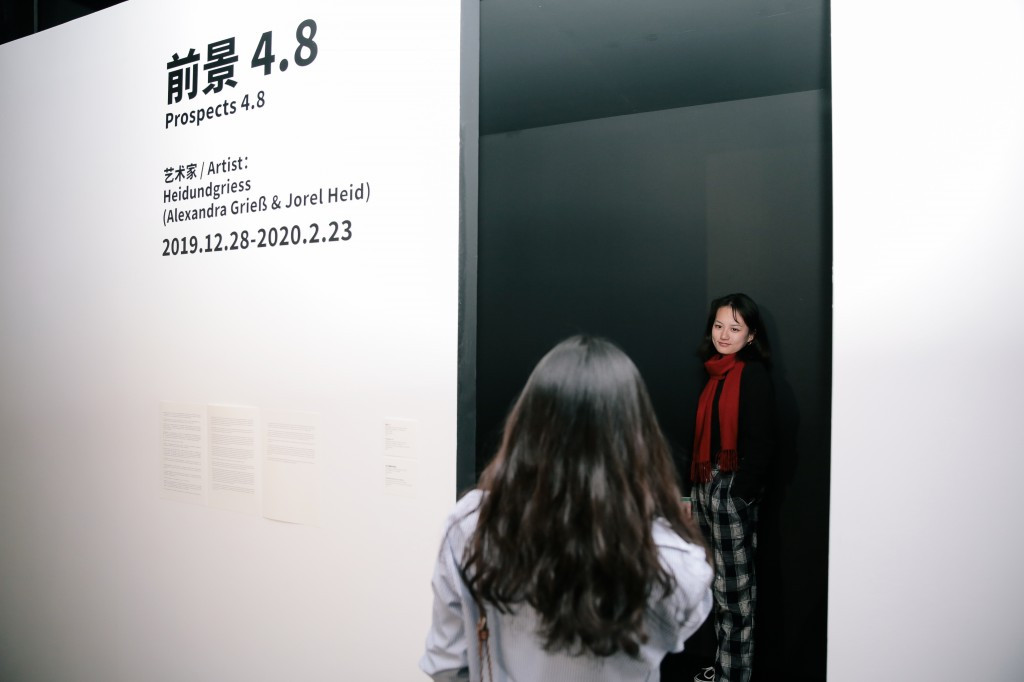
2 Installations that focuses on the topic of urban growth and -expansion.
In addition, a debate on issues such as: fake, power claims, the role of tradition in a digitized world,and the impact on nature in terms of a seemless endless growing cities, what is fake, what is real, is stimulated.
As part of the exhibition “prospects 4.8.” in A5 museum in Chengdu, China, 2019.
It shows two displays at the end of a black tunnel-like room. At the upper and lower end of both installations, mirrors are attached, that create an „infinity mirror-effect.
When viewed from a distance, the audience sees a kind of precious cloth, that may reminds people of precious Shu embroidery through its beautiful surface, but it proves to be a cheap forgery of the ancient traditional hand-craft after careful observation.
Side A:
Shu embroidery symobolizes one of the most prosperous periods in China. Originally, colorful traditional patterns such as plum and hibiscus flowers, were supposed to bring good luck and happiness. We changed this pattern with 4 Chengdu’s interchanges with the appereance of navigation apps.
We deliberately chose an industrialized production to dissect the subject more in depth. The material shall guide audience to pay more attention on the implementation of “counterfeiting” of traditional handcrafts and lead the audience to question the extent of which the traditions and mature structures still play a role in ” Industry 4.0“.
Side B:
Second display of 2 Installations that focuses on the topic of urban growth and -expansion.
In addition, a debate on issues such as: fake, power claims, the role of tradition in a digitized world,and the impact on nature in terms of a seemless endless growing cities, what is fake, what is real, is stimulated.
It shows a display at the end of a black tunnel-like room, that is covered with green artificial turf in form of a rectangle, with a circle of natural grass in its center
The supposed natural circle, which is enclosed by the artificial turf, withers slowly. Finally, when one considers that the lawn itself is no longer a purely natural, wild-growing element, but is actually a product developed by humans, the extent may becomes clearer.
The question is stimulated if there is any space left, where nature is not influenced by humans?
Location
A5 museum, Chengdu, China